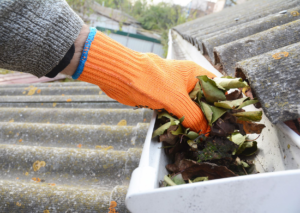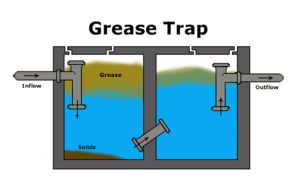Insulation removal and replacement services can improve home comfort, energy efficiency, and more. The professionals know the proper techniques and safety protocols to complete the project quickly and efficiently.
The experts also follow strict procedures for contaminated materials, such as asbestos, to prevent airborne fibers. They can offer specialized disposal options and ensure that all debris is removed from the work site. Contact Perth Insulation Remover now!

Whether you’re working on attic insulation removal or other home insulation projects, an insulation removal vacuum can make the job much easier. These specialized machines can suck up old fiberglass, cellulose, rock wool or other blown-in insulation and dispose of it safely without making a mess. They’re ideal for use with attics, sidewalls and crawl spaces. Insulation removal vacuums are powerful and can handle a lot of debris, but they’re not without their share of challenges. The most important thing to remember when using one is that it can be very dusty, so you’ll need to take precautions. This means wearing a mask, eye protection and coveralls while working in the attic or other areas where you’ll be handling debris.
Before you start, make sure you’ve cleared the work area of any obstacles or debris that may interfere with the machine’s performance. Also, make sure you’ve read the manufacturer’s instruction manual to familiarize yourself with how the insulation removal vacuum works and to learn any safety tips or precautions.
Once you’re ready to start, turn on the insulation removal vacuum and begin removing the old insulation. You’ll need to be patient, as the process can be quite time-consuming and it will take some effort to get all of the old insulation out of the attic or other areas of the home. Be sure to check the machine regularly for clogs or other problems and remove the waste bags from the attic when they’re full.
The best way to remove blown in insulation is by vacuuming, as it’s the most effective method for reducing airborne pollutants and contaminants. Insulation removal vacuums are designed specifically for the job and come in a variety of models, each designed for a different type of insulation. Some are made for removing fiberglass, while others are better at sucking up cellulose or rock wool insulation.
If you’re tackling a large attic insulation project, it’s a good idea to partner up with someone and take turns in the attic. This will help reduce the amount of time you spend in the attic and also prevent your muscles from getting sore. If you’re working on a smaller attic, it may be possible to do the project solo. Just be sure to spread out some plastic or a drop cloth to protect items below the attic and don’t forget to wear a mask. Also, make sure you have a place to store the empty insulation bags and a trailer to transport them when they’re full.
Wire Strippers
Whether you’re installing an audio system in your car, repairing a lamp, or tinkering with your kid’s electronic toy, a wire stripper is an indispensable tool for the job. These handheld tools precisely peel back the plastic insulation from stranded or solid copper electrical wire, exposing the metal wire core for connection to other components. This is a vital step for most projects, and is much more efficient and accurate than using a knife.
Wire strippers are available in a variety of shapes and sizes, and can be tailored to specific types of wiring. For example, a standard model is typically designed to cut and remove sheathing from stranded or solid copper wire up to 10-24 AWG in size. More specialized models are also available to strip coaxial cables (a thick, multi-conductor copper wire often used for TV and Internet connections) and even cut through tougher materials like copper or conduit.
The most basic type of wire stripper is a plier-style model that uses a series of different-sized notches in the jaws to precisely strip away sheathing. Simply place the end of a wire in one of the notches, close the jaws around it, and squeeze the handles to cut and remove the sheathing in a single action. Alternatively, some models use a blade to cut and strip the sheathing in a similar fashion to a pair of scissors, without damaging the underlying metal wire.
Both types of wire strippers are highly versatile and affordable, making them an essential tool for most electricians, hobbyists, and DIYers. However, the more expensive laser and precision types offer more advanced features to simplify complex tasks like cutting and crimping.
For example, some models allow you to crimp terminals on the copper wire end with a simple turn of the handle. This is a handy feature, as it eliminates the need for an additional tool and provides a strong, secure connection that resists corrosion. Likewise, some models can also be used to trim screws and bolts down to size, saving you the time of using a separate cutting tool.
Other models have a ratcheting mechanism to hold the wire in place while you cut and strip it, which can help reduce hand strain. This is especially useful when you’re stripping large numbers of wires in a short amount of time. Lastly, some models have built-in cutters that allow you to slice through hardened insulation and other materials like thin copper or tubing. This is another great time-saving feature, as it can reduce the need for a separate cutting tool and save you space in your tool bag.
Disposal
Insulation materials are a vital part of any home and help reduce the amount of heat or cool air that escapes throughout the year. Adding new insulation during a renovation or retrofit is often a cost-effective way to improve energy efficiency and reduce utility bills. However, the old insulation must be removed and disposed of properly to prevent health hazards and structural damage. Thankfully, there are several options for disposing of unwanted insulation.
One option is to sell the insulation materials, especially if they are in good condition. This can be done by listing the material on a website such as Craigslist or Facebook, or contacting local businesses and wholesalers directly. In addition, non-used insulation can be donated to charities or community groups who may benefit from it, such as homeless shelters.
If the insulation is in good shape, it can also be recycled at a local recycling center. This is a great way to contribute to sustainable practices while helping out the environment, and many cities have recycling facilities that specifically handle recyclables such as fiberglass and mineral wool insulation, as well as vermiculite and cellulose insulation.
However, it is important to note that not all insulation types are recyclable, and some are hazardous to the environment. If the insulation is made of materials such as asbestos, it requires special care when disposing of to ensure that the harmful contaminants are not released into the environment. In these cases, working with a waste disposal service that is familiar with environmental regulations is essential.
Other options for disposing of insulation include renting a dumpster or hiring a trash removal company to take it away. While this is a more costly option, it can be a cost-effective choice if you need to dispose of large quantities of insulation at once. It is also a good option if you are doing a large-scale demolition and need to dispose of all the construction debris in addition to the old insulation.
The best and most environmentally responsible option for getting rid of old insulation is to donate or recycle it. Insulation can be used in places like fishing shacks, sheds, and greenhouses, or even repurposed for attic insulation in the home. Donating or selling unwanted insulation can help save money while contributing to sustainable initiatives, and donating or recycling can be tax-deductible. It is always a good idea to check with local waste management authorities and professional insulation companies for more information on disposal methods.


